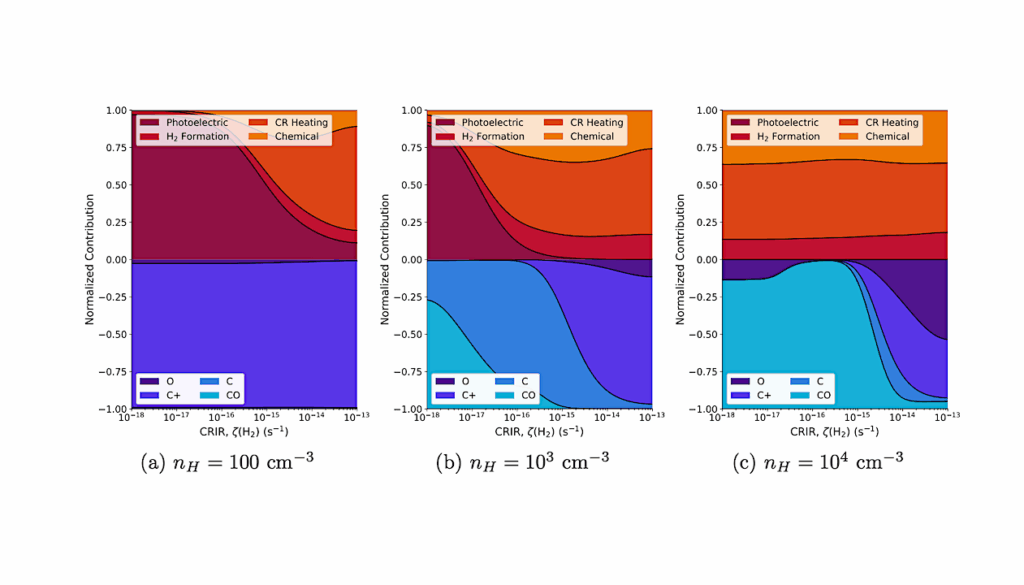4 Years Later … The Case For Life On Mars Withstands Criticism, Gains Support
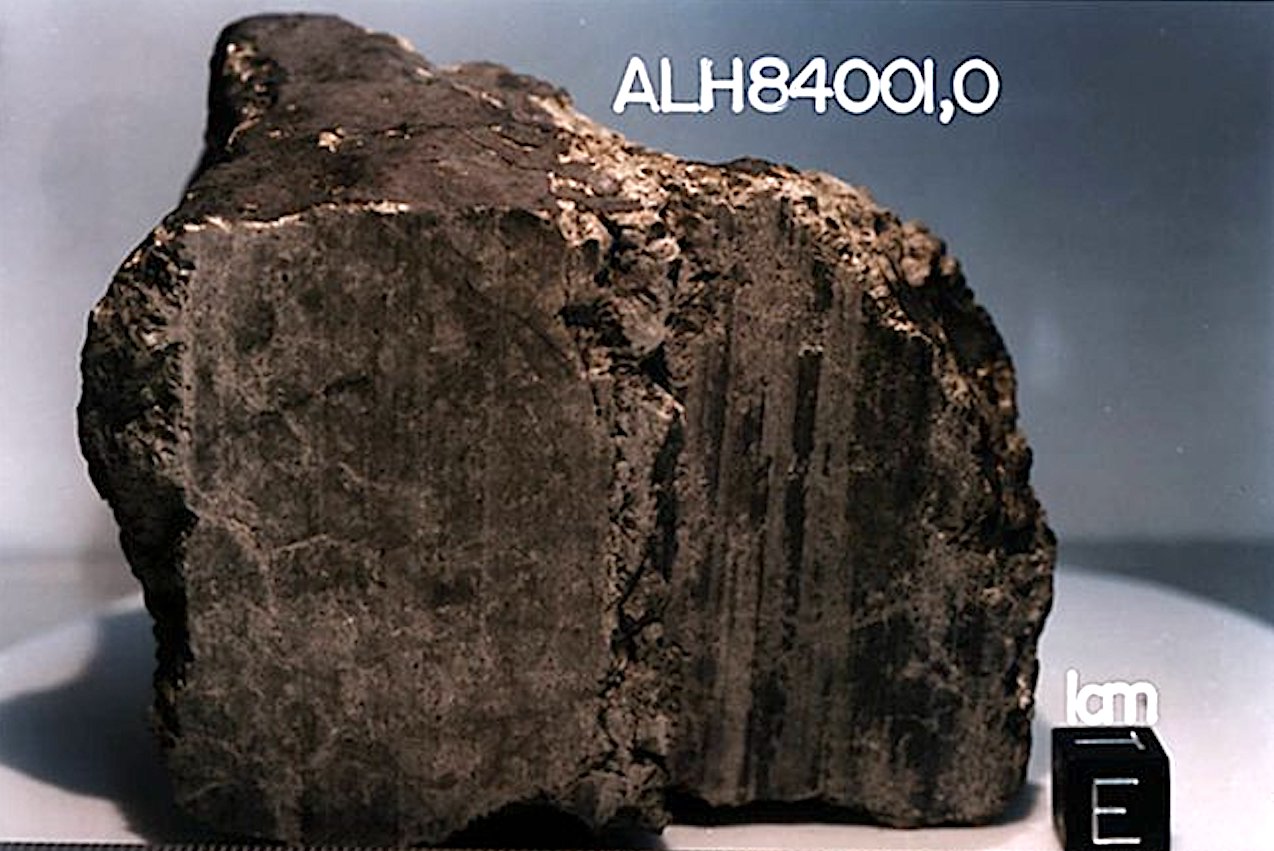
The editors of Precambrian Research and the team that startled the scientific world in August 1996 with evidence they had found in a Martian meteorite indicating that life once existed on Mars now announce publication of a followup paper [Gibson et al., Precambrian Research 106:15-34 (2001)]. In the 4 years since the publication of that controversial paper [McKay et al., Science 273:924–930], an enormous number of studies have been undertaken to refute or corroborate the hypothesis.
The paper being published in Precambrian Research this month offers new observations of two additional Martian meteorites, evaluates subsequent studies for and against the original lines of evidence, measures evidence for past life on Mars against established criteria for accepting terrestrial samples as fossils, and considers the problem of terrestrial contamination of martian samples-a problem that must be solved before samples are brought from Mars to Earth in 2014. Everett Gibson, senior author of the paper noted, “If the features observed in the two younger Martian meteorites are confirmed to have a biogenic origin, life may have existed on Mars from 3.9 billion years ago to as recently as 165-175 million years ago.”
“Life on Mars: evaluation of the evidence within Martian meteorites ALH84001, Nakhla, and Shergotty” is the title of the new paper. The authors of this work, which was funded by NASA’s Exobiology Program and Astrobiology Institute, are Everett K. Gibson, Jr., and David S. McKay of NASA’s Johnson Space Center; Kathie L. Thomas-Keprta, Susan J. Wentworth, and Mary Sue Bell of Lockheed Martin at JSC; Frances Westall, a National Research Council Fellow at the Lunar & Planetary Institute in Houston; Andrew Steele and Jan Toporski of the University of Portsmouth, England; and Christopher S. Romanek of the Savannah River Ecology Laboratory. Of these, Gibson, McKay, Thomas-Keprta, and Romanek were authors of the original paper on the subject.
The status of the four lines of evidence for life on Mars is summarized as follows.
- That the carbonate globules in Martian meteorite ALH84001 were formed at temperatures suitable for life has been generally accepted. Paul Warren of UCLA concluded in 1998 that high-temperature models could not be supported by the available data and went on to propose low-temperature models in which the carbonate formed by precipitation or evaporation, just as the team originally suggested.
- That ~25% of the crystals of magnetite (Fe3O4) found in the dark rims of the carbonate globules were formed by organisms has been shown to be more and more likely in two subsequent papers authored primarily by team member Kathie Thomas-Keprta. Her increasingly detailed comparison of these crystals to the efficient compasses made by magnetotactic bacteria on Earth (as characterized in the December 2000, Geochimica et Cosmochima Acta paper by Thomas-Keprta et al.) shows them to be indistinguishable.
- That ALH84001 contains hydrocarbons of Martian origin has been proven by team member Simon Clemett and colleagues at Stanford University; by George Flynn of SUNY–Plattsburgh and others, who in 1999 also found hydrocarbons in the younger Martian meteorite Nakhla; by Monica Grady and colleagues at the British Museum; and by Tim Jull and others at the University of Arizona.
- The main point of Jull’s 1998 paper is that he found ALH84001 to contain 15-20% indigenous carbon components but the majority of the hydrocarbons in the sample were from terrestrial contamination as measured by carbon-14. Jull later found that 75 to 80% of the reduced carbon components in Nakhla did not contain terrestrial C-14 and appear to have originated on Mars. Research has shown a significant portion of the hydrocarbons in the meteorites were in it when they left Mars. The polycyclic aromatic hydrocarbons (PAHs) Clemett’s group found in ALH84001 could be prebiotic; PAHs are known to exist in outer space. But they could also be formed by the decay of bacteria.
- It is only in combination with and proximity to the first three lines of evidence that the research team sees images of features in ALH84001 and now also in Nakhla (1.3 billion years old) and the meteorite named Shergotty (165-175 million years old) as similar to images of known microfossils. Electron microscopy is a much better technique than the traditional light microscopy for studying fossil bacteria in detail. Thomas-Keprta and McKay have used a scanning electron microscope (SEM) to examine modern fossils of bacterial cells, biofilms, appendages, and secretions (plaque) from several hundred meters deep in the Columbia River Basalt. They found strong similarities in size, shape and chemical composition between these known biogenic features and possible biogenic features in the ALH84001 and Nakhla Martian meteorites. They have also found ovoid structures in bacteria-containing samples from the Columbia River Basalt that are comparable to ovoid structures in crack-filling clays in Nakhla and Shergotty. Whether or not these ovoids are true biomarkers has yet to be determined, but the fact that they are embedded in or coated by clays that are clearly of Martian origin suggests that they, too, were formed on Mars. Gibson noted, “If water exists beneath the Martian surface, why shouldn’t life be present today on Mars?”
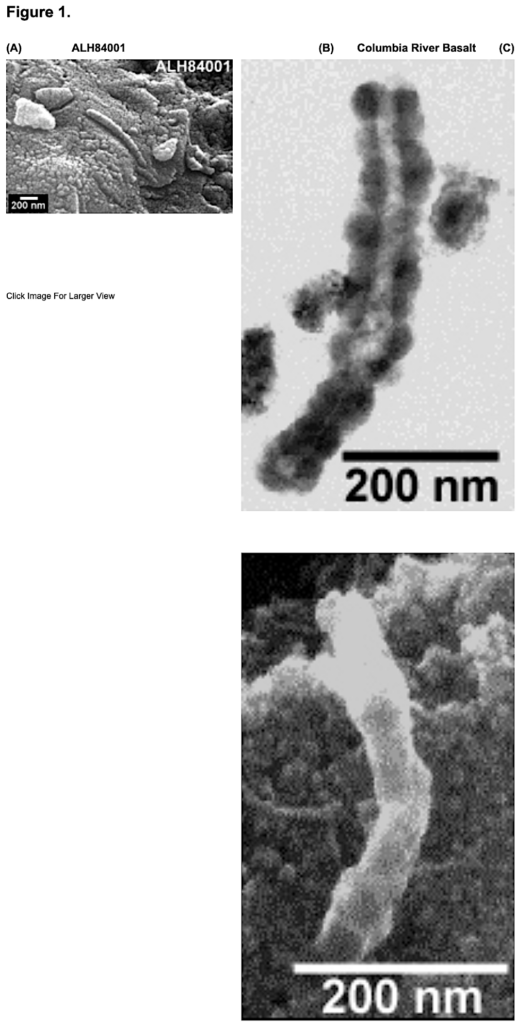
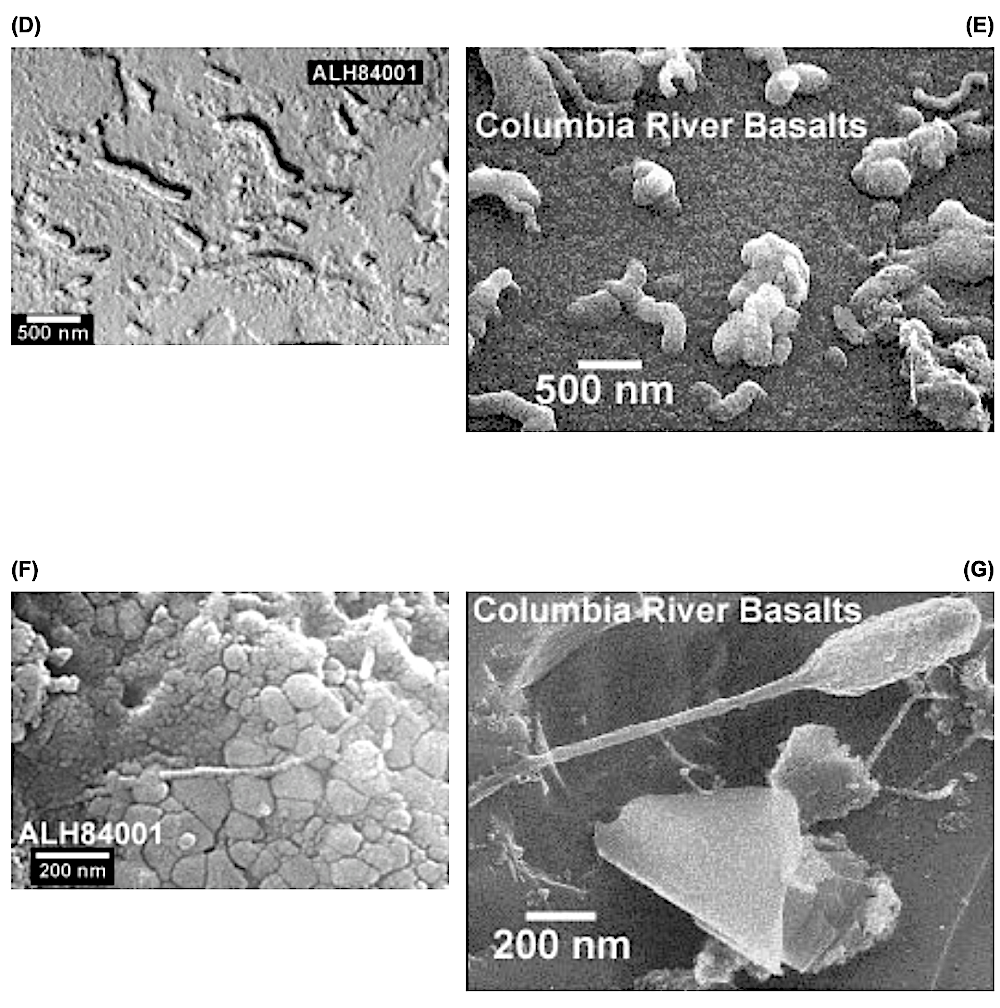
Figure 1.
(A) ALH84001 (B) Columbia River Basalt (C) Columbia River BasaltColumbia River Basalt(D) ALH84001 (F) ALH84001 (G)
Figure 1. Biogenic-looking features in ALH84001 Martian meteorite (A, D, & F) and similar features in
the Columbia River Basalts (B, C, E & G). The features in the Columbia River basalt samples were
produced when rock chips were submersed in bacteria-containing well-water from the basalt formations
in a culturing laboratory experiment. Identical control experiments using sterilized water did not
produce any similar features. The similarity of the ALH84001 features to the Columbia River biogenic
features supports our interpretation that the features in ALH84001 were formed by bacteria.

Figure 2. Closeup [field emission scanning electron microscope (FE-SEM)] of a triplet structure within the martian meteorite Nakhla with a 20 nanometer wide filament extending from the apex of a terminal sphere. The spheres appear to be partially submerged within biofilm or a later generation of “iddingsite” clay.
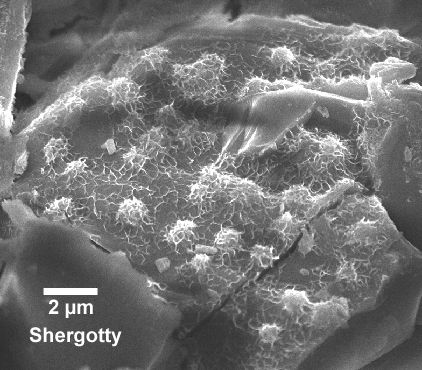
Figure 3. Field emission scanning electron microscope (FE-SEM) image of spheroidal features in the martian meteorite Shergotty with smectite-like clay coatings. These features and spheroidal features observed in Nakhla [Figure 2] are both similar to features in samples cultured from Columbia River Basalt [Figure 4].
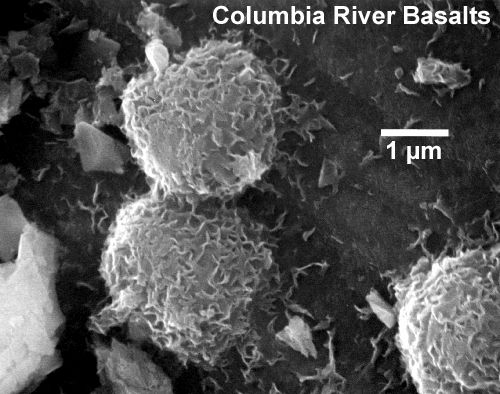
Figure 4. Field emission scanning electron microscope (FE-SEM) images of spherical features in bacteria-containing samples from Columbia River Basalt. Such features were absent from sterile controls (Thomas-Keprta et al., 1998. Their morphology is similar to that of features in martian meteorites Nakhla [Figure 2] and Shergotty [Figure 3].
Astrobiology




